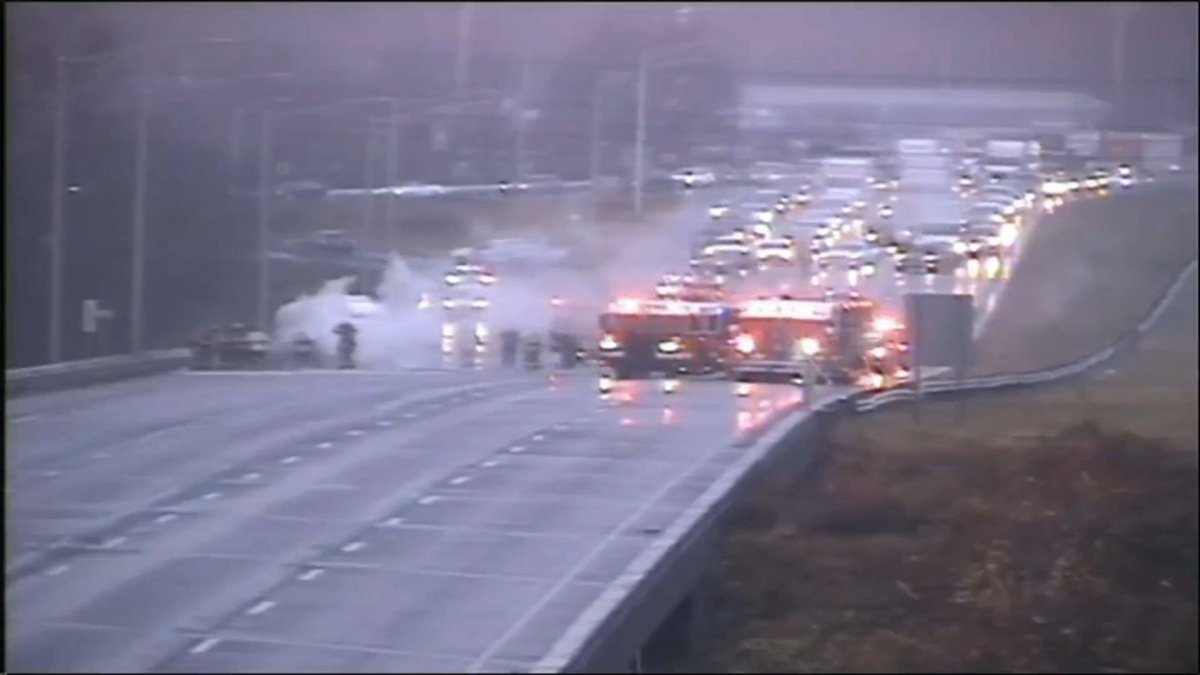Connecticut
Teacher shortage bedevils Connecticut as school starts. ‘You’re not going to fix this in one day’

The national educator shortage continues to grip Connecticut despite abatement efforts from state and district leaders, impacting class size and course offerings in classrooms across the state.
More than 2,600 teacher and paraeducator positions went unfilled in the spring of 2023, according to research conducted by the Connecticut State Department of Education. The result of this year’s shortage survey won’t be available until later this fall, but open positions on just one teacher job site showed more than 1,400 teacher openings.
Hartford Public Schools reported more than 150 vacant teaching positions across the district.
Hartford Superintendent Leslie Torres-Rodriguez explained that the start of the school year is particularly volatile.
“It’s so fluid. I mean, I just spoke to a principal this morning who was excited that they finally found the teacher that they were looking for, and I spoke to someone else at our central office who said, ‘Oh, we’re going to have someone transition to another district for a leadership position,’ ” Torres-Rodriguez said.
Patrick Raycraft/Hartford Courant
Hartford Public Schools Superintendent Leslie Torres-Rodriguez
Like so many other teachers fleeing underfunded high-need schools, a number of factors play into the decision to leave.
“It was a combination, for that teacher, of higher pay in another district, in a district that does not have the concentration of need that we do, and it was also closer to home,” Torres-Rodriguez said. “Though she loves Hartford, it was hard for her to say no to that opportunity.”
Torres-Rodriguez said another consideration for teachers is the length of the school day. She said that other districts subtract 15 minutes from their daily instruction. While the extra time adds up for teachers, Torres-Rodriguez said it also adds up for students, and she is not convinced that is an equitable tradeoff.
‘Leverage’
But by far, the loudest factor is compensation, something Torres-Rodriguez said Hartford does not have the financial wiggle room to boost.
“It’s challenging work, it is rewarding work. But when we’re thinking about the broader backdrop of a market (that) is so competitive, it becomes hard when you have to think about a strategy for salaries that requires added investments that we as a school system and quite frankly, at the city, might not necessarily have,” Torres-Rodriguez said.
Kate Dias, the president of the Connecticut Education Association, said scarcity in the market has fueled a “poaching mentality” that was once considered taboo.
“We’ve seen a real effort to move teachers from one district to another,” Dias said. “(Before) districts didn’t try and poach from each other. Now, it’s kind of blatant: ‘Nope, I’m going after all your people. And if I can pay more, or I can offer better FMLA leave, or better insurance costs, or assurances around class size, I’m going to try and leverage that to really pull teachers from other districts.’ ”
Dias said that up until recently, it was typical for teachers to spend their entire career in a single district. Now, even midyear swaps have become commonplace.
Dias said that the heightened mobility is a concern, “because what we don’t want to create across this state is the haves and have nots.”
Dias also said the CEA encouraged the legislature to direct funds toward teacher salaries as a way to reduce pay disparities across districts that can leave some communities at a disadvantage.
In the 2023 session, the legislature opted to accelerate the state’s Education Cost Sharing grant schedule. Dias said the extra money going to districts is great, but the absence of earmarked dollars for teacher salaries is problematic.
“We haven’t set any expectations around utilizing state resources to increase teacher compensation,” Dias said. “I think that’s a real missed opportunity. We sort of hope for the best, and hoping for the best is not necessarily a sound financial practice.”
Dias said the teachers made gains in other areas. Legislation raised the kindergarten start age, approved play-based learning, reformed teacher evaluation practices, and put a focus on school climate, but “where we kind of missed, the mark was in a lot of the financials,” Dias said.
“The only front-line workers who were completely left out of any (Heroes Pay) acknowledgement were educators,” Dias said. “When we talk about workforce development in the state of Connecticut, we have to consider that for teaching as well. And as we talk about what it looks like to be competitive wage wise, benefit wise, that’s an important piece of this puzzle that did not get addressed this past session.”
‘A livable wage’
Shellye Davis is the president of the Hartford Federation of Paraeducators and the vice president for Paraprofessionals and School-Related Personnel for the American Federation of Teachers Connecticut. She said that paraeducators were “overlooked and undervalued” in the 2023 session.
“As far as legislation, they absolutely left us out,” Davis said. “The couple para bills that we had weren’t even voted on — and that was a slap in the face.”
Nikolaevich / Getty Images
“It’s just very dangerous not to have the amount of people you need, and it’s not supporting the children,” Davis said.
Paraeducators play a vital role in the classroom, operating as an extra set of eyes and hands for teachers that assist in classroom management, behavioral management and one-on-one support for students. But low pay is driving a shortage in the profession. With salaries starting at $27,000, Davis said most paraeducators have no choice but to work a second or third job.
“They’re getting a poverty paycheck and if you have a family, you can’t live on that,” Davis said. “Paras are actually leaving, not because they don’t love the kids or their job, but they need to make ends meet.”
Davis said that the paraeducators who remain are stretched thin. She said specialized programs serving children with the highest need are understaffed, some by as many as three positions, posing safety concerns.
Davis said policy makers need to act with urgency.
“The district and our elected leaders have to make this a priority. And what they have to do is give this position a livable wage,” Davis said. “If they spent more money to keep the people that are here and give an incentive package to those that are coming in, we’d be all right.
“It’s just very dangerous not to have the amount of people you need, and it’s not supporting the children,” Davis said. “We’re not doing our job effectively at all, and therefore our children aren’t getting what they need. At the end of the day, this is really all about our students and we’re not giving them what they should have. I don’t think your zip code should determine the education you get.”
‘Think about this long-term’
Sinthia Sone-Moyano, the deputy commissioner for educational supports and wellness at the Connecticut State Department of Education, said the staffing shortage is not hitting all schools equally.
“Some districts that we’re working with are fully staffed and then you have others that are not,” Sone-Moyano said.
She said her biggest concern going into the 2023-2024 school year is ensuring that classrooms open with the most qualified teachers and as many staff positions filled as possible.
Sone-Moyano said CSDE continues to address the shortage with a focus on recruitment, retention and diversifying the educator workforce.
The deputy commissioner pointed to a number of post-pandemic initiatives aimed at curtailing the shortage, including classroom grants, extra supports, collaboration, student loan subsidies, as well as “grow-your-own” and paid apprenticeship programs.
“That will create that pipeline for the shortage because the shortage has existed for many, many years. It’s not something that’s new,” Sone-Moyano said. “You’re not going to fix this in one day. We have to think about this long-term.”
In the short term, the CSDE said the department is issuing emergency certificates that allow educators to teach other subjects with temporary authorization.
Critics argue that districts should not expect teachers to fill the gaps by taking extra classes and that doing so only fuels the burnout. Proponents, like CSDE, say the program provides districts with much needed flexibility to fill openings on a day-to-day basis and deliver students with what they need.
“That’s one of those things that helps immediately,” Eric Scoville, the director of communications for CSDE, said. “When they’re running up against the start of the school year, they’re able to shift some educators around to fill some of those gaps, maybe temporarily until they can fill the position, et cetera.”
Since the start of the program, CSDE has issued 416 emergency authorization to 378 educators. Other programs, like the Northeastern Enhanced Reciprocity Initiative between Connecticut, 11 states, Washington, D.C. and Puerto Rico, have brought 478 new teachers to the state, according to the most recent CSDE estimates.
Scoville said that when CSDE conducts its shortage survey in the fall, the hope is that the number of vacant teacher and paraeducator positions will have fallen.
“We did not traditionally track this. So this is something we put into place because of the pandemic and the impacts we were seeing in growing teacher shortages,” Scoville said. “The hope is that we’re closing the gap, but we have to wait and see.”
Scoville said CSDE will continue to monitor and evaluate the impact of CSDE’s recruitment and retention initiatives and request the continuation of successful programs. He said he is hopeful that the shortage will subside.
“We’re rolling out more and more initiatives each year. To support this gap, the legislature just approved a few additional programs for educator recruitment. So there’s more tools in our toolkit than there were at the beginning of the pandemic,” Scoville said.
Even if the number of openings show signs of improvement, Fran Rabinowitz, the executive director of the Connecticut Association of Public School Superintendents, said that isn’t cause for celebration yet.
“It’s slightly better this year but I don’t think we should believe that that means we don’t have an issue. We have an issue, and certainly it is far worse in our most challenged districts,” Rabinowitz said. “It’s very difficult because we all know that the greatest treasure that we have and the greatest impetus for moving our kids forward are effective staff members …(Challenged districts) have fought this forever, and I do think it’s time for us to really take a very close look nationally and certainly statewide at why it’s happening.”
Rabinowitz said that even one vacancy is one too many. If students take first grade or physics for the first time without a qualified educator, it creates an impact that can last for years.
While Rabinowitz underscored the importance of long-term investments, she said more needs to happen right now.
“The State Department of Education together with the governor have done very effective things for the long range plan…But like I said … the child starting first grade is just spending one year in first grade,” Rabinowitz said. “I would strongly suggest a blue ribbon panel or something very similar, (a) coming together of experts who can really make some solid recommendations within a very limited time frame. I think it would draw attention to the profession as being incredibly important and I do think that there could be very solid recommendations that come out of that, that we may not even know right now.”
Rabinowitz said teachers need better working conditions, higher pay, and the tools to be successful, but she said reversing the shortage will also require a cultural shift throughout the state that emphasizes respect for educators.
“I think that needs to be turned around and I do believe Connecticut can do it,” Rabinowitz said. “You have a silent majority that really understand and know how difficult and challenging (it is) and are talented. You need to be able to teach and teach well. And I think we need to call upon those people and we need to broadcast that it’s a wonderful, amazing profession that has profound influence and is worthy of everyone’s respect.”

Connecticut
On CT Adoption Day, 40 children find their forever homes

Judge Matthew Larock asked Ryan Soto if he had a statement to make. Soto was sitting next to 11-year-old Gabriel in a Torrington court room on Friday, finalizing his adoption.
Soto stood up and turned toward the gallery. The courtroom benches were filled with family members and case workers from the state Department of Children and Families, wearing proud smiles. This was a good day.
First, Soto thanked the many people who had helped make the adoption a reality. Then, he looked at his son.
“Gabe, I am honored that you came into my life. You are such an intelligent, kind kid. Thank you for making room in your heart for me as your dad, because we all have options here,” Soto said. Then, Soto addressed the rest of the room, and even the imagined audience that might be listening beyond:
“There’s so many kids out there and a lot of older youth, they need help, and oftentimes we forget that they are still kids. They still yearn for love and family. So, we can make a difference. I didn’t do this alone — we made a difference in Gabe’s life.”
Soto gave Gabriel a kiss on the forehead and took a seat.
Gabriel was one of 40 children who were adopted across Connecticut on Friday, CT Adoption Day. DCF spokesman Peter Yazbak said that around 350 children are expected to be adopted this year in Connecticut.
DCF Commissioner Jodi Hill-Lilly joined the ceremonies in Torrington on Friday, with balloons, toys and cake to celebrate. Once Soto finished his comments, Hill-Lilly said a few words.
“What a tribute. I just personally want to say thank you for stepping up and doing what I consider to be God’s work,” Hill-Lilly said. Hill-Lilly urged other families to consider taking on a fostering role.
“I would be remiss if I didn’t say you too can be an adoptive or a foster parent,” Hill-Lilly said.
After the ceremony ended, Soto shared a little more of his journey to adopting Gabriel. As a gay man who wanted to be a dad, “for obvious reasons it wasn’t happening naturally.” So, he started considering fostering a child to adopt, and imagined a kid under 5 years old.
But then, DCF sent him Gabriel’s profile, a 9-year-old looking for a forever home. “I said why not? Let me give him a chance.”
There were challenges. Gabriel had a hard time building trust with Soto, and sometimes grated against his rules. Those, Soto said, are typical challenges with older kids. “But when that wall comes down, it’s a big wall.”
That wall started to come down when Soto attended an awards ceremony at Gabriel’s school. “He was able to count on someone to be there, and I think from there he started trusting — trusting that somebody could care,” Soto said.
Gabriel is still in contact with his biological family. His 4-year-old half-sibling, Elias, who had been adopted by another family, was also present at the event.
DCF has made a major effort in recent years to place children with relatives if they can’t remain with their birth parents. That means the number of children eligible for adoption to non-biological families has gone down. But there remains a bigger need for foster parents who are willing to serve as temporary placements for children who may need a home until they can return to their families.

Natalia Liriano, the director of foster care for DCF, said that many of the children who do need adoptive homes may be older children, or children with significant health issues. People can learn more about those kids by visiting the DCF Heart Gallery page.
“We’re talking about teenagers who can give you a run for your money but they still need love and they still are deserving of being in relationships, children with medically complex needs who need to be in longstanding relationships,” Liriano said.
Earlier on Friday, 1-year-old Corrina was adopted by mom Michelle Gonzalez. Corrina, dressed in a pink tutu, took to the courtroom like a massive play area. She batted at the heart-shaped balloons, smiled at reporters, enjoyed bites of cake, and hugged her mom when it all got to be too much.
When the ceremony was over, Richard Federico, a judicial marshall walked through the court room, taking in the happy faces and tutu-clad toddler.
“This is probably the best thing to happen here,” he said.
Connecticut
Connecticut man dies after being struck by SUV while crossing busy N.J. highway, police say
A 64-year-old Connecticut man died this week after he was struck by a car while crossing a busy Monmouth County roadway earlier this month, authorities said.
The man, identified Friday as Niantic resident Michael Losacano, was hit shortly after 6:30 p.m. on Nov. 9 on State Highway 35 in Wall Township near Wall Church Road, according to a statement from the Wall Township Police Department.
Losacano was taken to Jersey Shore University Medical Center by local EMS where he died on Monday, the department said.
Connecticut
Tractor-trailer carrying thousands of gallons of fuel catches fire on I-91 in Wethersfield

A tractor-trailer hauling thousands of gallons of fuel caught fire on Interstate 91 North in Wethersfield on Friday morning.
State police said state troopers responded to I-91 North near exit 24 around 7:42 a.m. and found the cab of a tractor- trailer carrying 7,500 gallons of fuel on fire.
The driver was able to get out of the truck and was not injured, according to state police.
The fire departments from Wethersfield and Rocky Hill responded to the scene to extinguish the fire and troopers shut down I-91 North and South as well as oncoming traffic from Route 3 to I-91 South.
Because the truck was hauling fuel, troopers worked to move drivers who were nearby, state police said.
I-91 South reopened shortly after the fire was out.
The left two lanes of I-91 North have been reopened and the state police Fire & Explosives Investigation Unit is also responding to assist with the investigation.
State police said the state Department of Energy and Environmental Protection later responded to the scene.
-
Business1 week ago
Column: OpenAI just scored a huge victory in a copyright case … or did it?
-

 Health1 week ago
Health1 week agoBird flu leaves teen in critical condition after country's first reported case
-

 Business6 days ago
Business6 days agoColumn: Molly White's message for journalists going freelance — be ready for the pitfalls
-

 Science4 days ago
Science4 days agoTrump nominates Dr. Oz to head Medicare and Medicaid and help take on 'illness industrial complex'
-

 Politics5 days ago
Politics5 days agoTrump taps FCC member Brendan Carr to lead agency: 'Warrior for Free Speech'
-
/cdn.vox-cdn.com/uploads/chorus_asset/file/25739950/247386_Elon_Musk_Open_AI_CVirginia.jpg)
/cdn.vox-cdn.com/uploads/chorus_asset/file/25739950/247386_Elon_Musk_Open_AI_CVirginia.jpg) Technology5 days ago
Technology5 days agoInside Elon Musk’s messy breakup with OpenAI
-

 Lifestyle6 days ago
Lifestyle6 days agoSome in the U.S. farm industry are alarmed by Trump's embrace of RFK Jr. and tariffs
-

 World5 days ago
World5 days agoProtesters in Slovakia rally against Robert Fico’s populist government




















